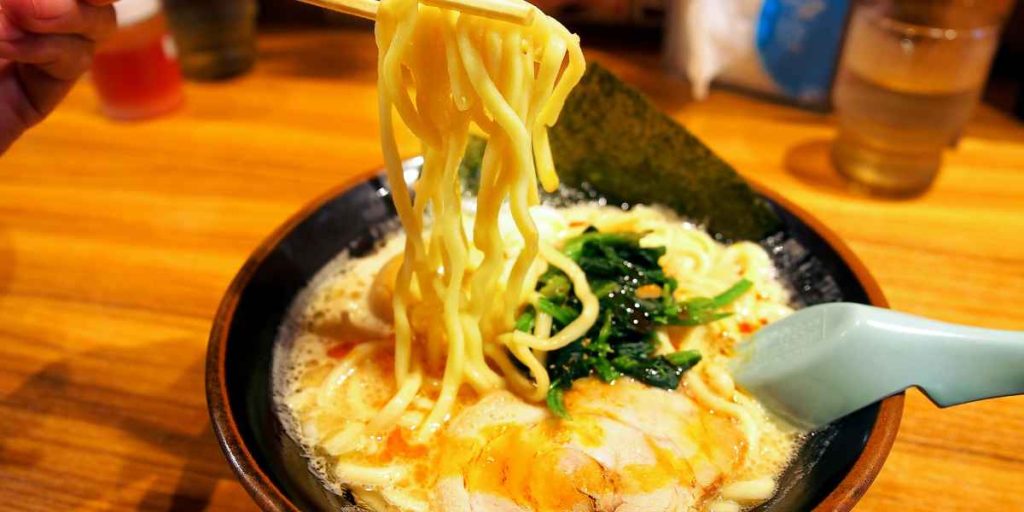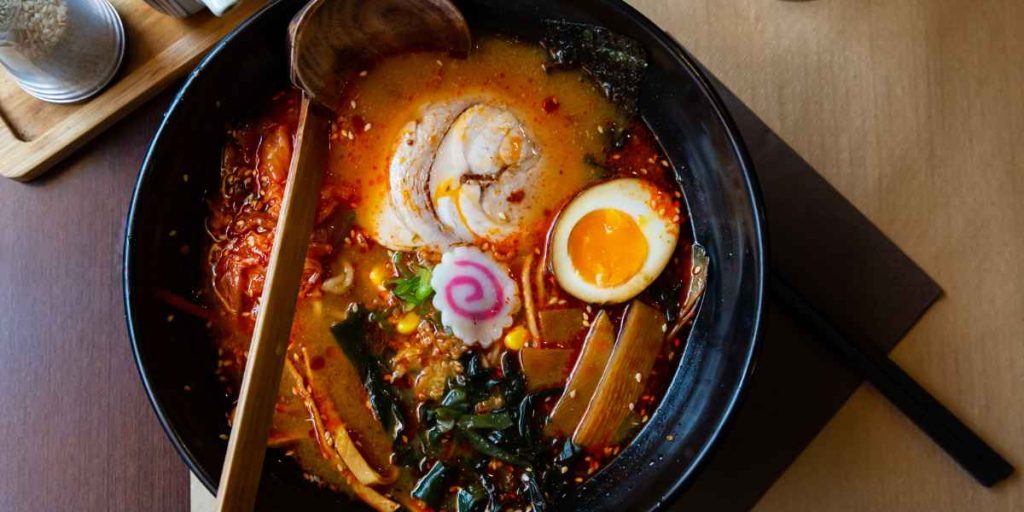Ultimate Guide : How long to microwave ramen
How long to microwave ramen ? Are you looking for the perfect way to quickly and easily make a delicious ramen meal? Look no further than the microwave! Yes, it’s true – you can make delicious ramen in the microwave in just a few minutes. In this blog post, we’ll discuss how long to microwave ramen, tips for getting the perfect bowl of ramen, and how to make sure your ramen is cooked properly. By the end of this blog post, you’ll have all the information you need to make a delicious bowl of microwave ramen. So let’s get started!
Visual Clues
A. Color
1. Explanation of the Changes in Color that Occur During Cooking:
Cooking food can cause changes in color as the food is heated. Depending on the food, the color can change from light to dark or from yellow to brown. For example, when raw bacon is heated, it begins to turn a golden brown color. As the bacon continues to cook, it will become darker brown with a crisp texture. The color of cooked bacon can vary depending on the type of cooking method used and the amount of heat.
2. Indication of When Bacon is Properly Cooked:
When bacon is properly cooked, it should be golden brown and crispy. If it is still pale or light in color, it may not be fully cooked and should be returned to the heat. The color of the bacon can also be an indication of the temperature used during cooking. If the bacon is too dark, it may be overcooked and can become dry or burnt. The best way to make sure your bacon is cooked properly is to use a thermometer to check the internal temperature. It should reach 165°F (74°C) before it is safe to eat.
B. Crispiness

1. Explanation of the Texture Changes that Occur During Cooking
Crispiness is a common texture change that occurs during cooking. This texture change is caused by the heat of the cooking process breaking down the cell walls of the food and releasing moisture, causing it to become crunchy and brittle. The type of food, cooking temperature and cooking time all influence the level of crispiness achieved. For example, when roasting vegetables, the higher the cooking temperature and the longer the cooking time, the more crispy the vegetables will become. Similarly, when cooking bacon, the higher the temperature and the longer the cooking time, the more crisp the bacon will be.
2. Indication of When Bacon is Properly Cooked
When cooking bacon, the most important indicator of properly cooked bacon is crispiness. Crispy bacon indicates that the fat and proteins have been fully cooked and the bacon is ready to be served. To achieve crispy bacon, it is important to cook the bacon at a high temperature and for a longer cooking time. Additionally, the bacon should be flipped or stirred frequently to ensure even cooking and crispiness. If the bacon is not crispy enough, it should be cooked for a few minutes longer.
Touch Test

A. To determine if bacon is done using touch, you should pick up a piece of the bacon with a pair of tongs and press it lightly with your finger. If the bacon feels firm to the touch and has an even texture, then it is likely done. However, if the bacon is still soft and flimsy, then it needs to be cooked further.
B. Bacon is properly cooked when it feels firm and has an even texture. If the bacon still feels soft and flimsy, then it needs to be cooked further. Additionally, if the bacon is still greasy or feels soggy, then it is not done. You can also look for a golden-brown color to indicate when the bacon is done.
Temperature
A. Temperature is a useful tool to determine if bacon is cooked to the proper level of doneness. A digital thermometer can be used to measure the internal temperature of the bacon to make sure it has reached the appropriate temperature. The ideal temperature for bacon to be considered done ranges from 145°F to 165°F, depending on the desired level of doneness. If the internal temperature of the bacon does not reach this range, it can result in undercooked bacon that is not safe to eat.
B. The recommended temperature range for properly cooked bacon is 145°F to 165°F. This temperature range can be used to determine the desired level of doneness, whether it is lightly cooked, slightly crispy, or extra crispy. The higher the temperature, the crispier the bacon will be. It is important to make sure that the internal temperature of the bacon is reaching this range in order to ensure that it is fully cooked and safe to eat.
Cooking Methods

A. Different cooking methods have varying effects on cooking time. Grilling and broiling are very fast methods that cook food quickly, while boiling, braising, and stewing are slow methods that require more time. Roasting and baking require an initial high temperature to brown the food, followed by a lower temperature setting to finish cooking the food, resulting in a medium-length cooking time.
Grilling and broiling involve high heat and direct contact with the heat source. These methods are used for quick cooking and are ideal for items like steaks, burgers, and fish. Grilling involves cooking over hot charcoal or gas, while broiling is cooking from below with a heating element.
Boiling and braising involve submerging food in hot liquid. Boiling is used to cook food quickly and is ideal for items like pasta and vegetables. Braising is a slower cooking method that involves simmering food with a lid on the pot. This method is often used for tougher cuts of meat that require a longer cooking time to tenderize.
Roasting and baking involve cooking in an enclosed oven. Roasting involves higher temperatures and is used for items like meats and vegetables. Baking is a slower method that requires a lower temperature and is typically used for items like cakes and breads.
Stewing is a slow-cooking method that involves simmering food in a liquid. This method is often used for tougher cuts of meat and can take several hours to finish.
B. When adjusting cooking time based on the method used, it is important to take into account the size of the item being cooked. For example, a steak will cook faster on the grill than a roast will in the oven. If a recipe calls for a particular cooking method, it is important to adjust the cooking time to suit the item being cooked. For example, if a recipe calls for roasting a chicken for an hour, it may take longer or shorter depending on the size of the chicken. It is also important to monitor the food during cooking and adjust the time as needed.
Conclusion : How long to microwave ramen
As we have seen, the answer to the question of how long to microwave ramen is highly dependent on the wattage of your microwave and the type of ramen you are cooking. Generally, it is recommended to cook ramen for 2-3 minutes at a medium-high setting for most standard microwaves. If you are cooking a different type of ramen, the cooking time could be longer or shorter.
No matter what type of ramen you are cooking, it is important to monitor the cooking process to avoid overcooking or burning the noodles. The key is to find the perfect balance between soft and chewy noodles and an evenly cooked soup base.
By following the tips outlined in this article, you should be able to find the perfect cooking time for your ramen. So the next time you’re in a pinch, you’ll know exactly how long to microwave ramen!

